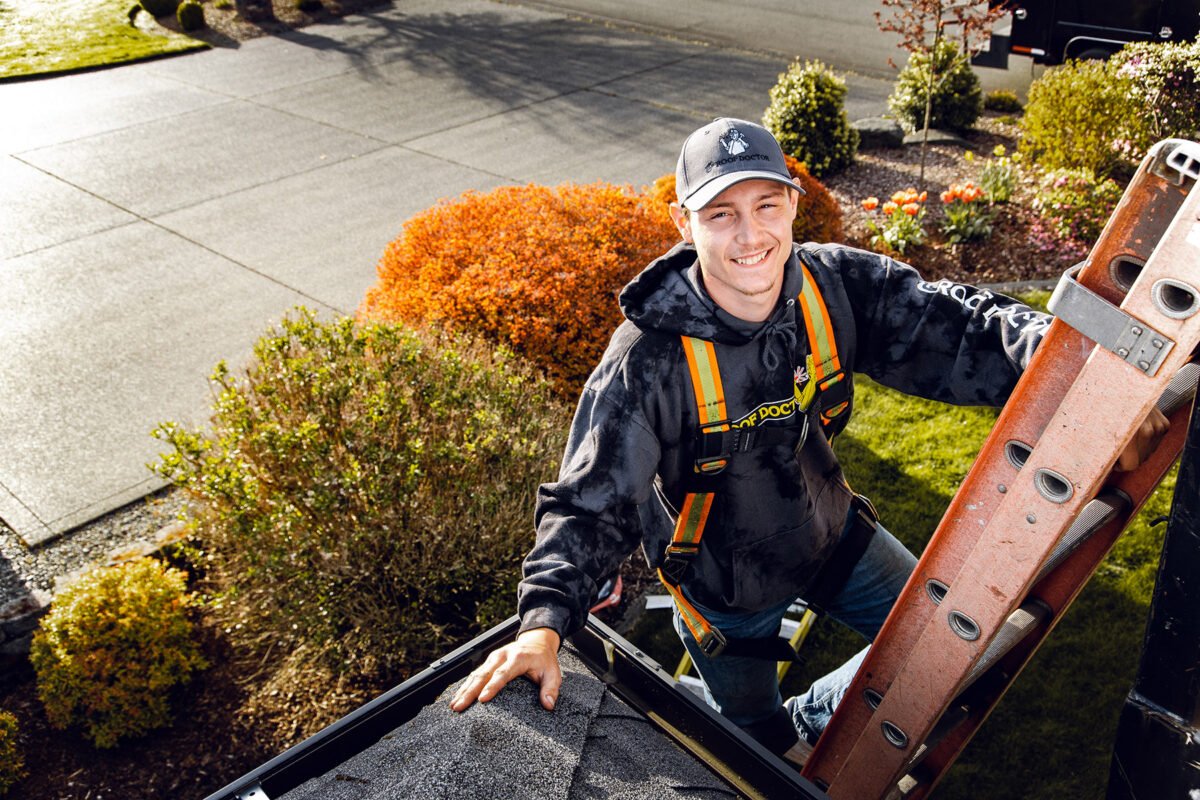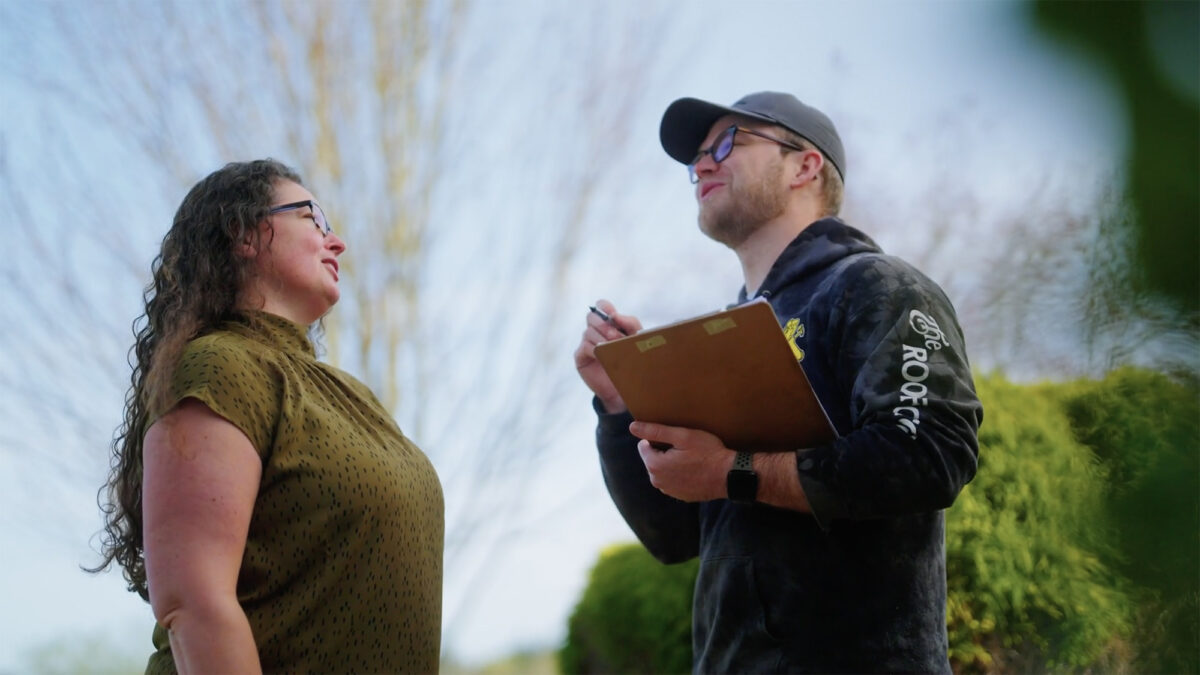How to Hire A Roofing Contractor
Choosing the right roofing contractor for your project matters for both homeowners and business owners. You want a quality roof that looks great, keeps your family or business sheltered, and is durable—and you want the job done right the first time. In this guide, we’ll cover important considerations and essential questions to ask before you hire a roofing contractor. You’ll learn how to assess costs, identify red flags, and ensure you’re making an informed decision. Let’s explore The Roof Doctor’s best practices to find a skilled and reliable roofing contractor for a successful project.
Understanding Roofing Contractor Basics
What Defines a Qualified Roofing Contractor?
A qualified roofing contractor will have experience, skill, and a thorough understanding of various roofing materials and roofing installation techniques. They should have a proven track record of quality workmanship in roof repair and roof replacement, and a commitment to upholding industry standards for quality and safety.
Licensing and Insurance: Non-Negotiables for Hiring
Licensing and insurance are not just formalities; they are essential for peace of mind. A reliable roofing contractor will have general liability and workers’ compensation, safeguarding you from any unforeseen incidents like damage to your roof or an accident on the job. Always verify a contractor’s licensing and ensure they have comprehensive insurance coverage before signing a contract for any home improvement projects.
Preparing to Hire a Roofing Contractor
Researching Potential Contractors: What to Look For
Start by looking for local roofing experts with a solid reputation. Check their standing with the Business Bureau (BBB) and read customer reviews to gauge their reliability and customer satisfaction. Look for those who have a proven track record in both install and repair. Check their licensing status and ensure they are bonded and insured, for your protection. It’s also wise to review their portfolio of past projects to assess their expertise with various types of roofing materials and styles.
The Importance of Local Experience and Reputation
Choose a contractor with local roofing experience. They understand the specific challenges posed by your area’s climate and can recommend the best roof system for your needs. A contractor with a good local reputation is more likely to provide reliable service and maintain high standards to uphold their standing in the community.
Key Questions to Ask a Roofing Contractor
Experience and Past Projects: What You Need to Know
When choosing a roofing contractor, it’s important to inquire about their experience and review their past projects. Ask for a portfolio or examples of previous work, especially projects similar to yours. This will give you a clear idea of their expertise and the quality of their work. Understanding their experience with different roofing materials and styles will tell you if they can handle your specific roofing needs effectively.
Understanding Warranty and Contract Terms
Before hiring a roofing contractor, you’ll need a clear understanding of the warranty and contract terms. A reputable contractor should provide a comprehensive explanation of what the warranty covers, including labor and materials, and for how long. Be sure you’re comfortable with all the contract details, including the scope of work, timeline, payment terms, and how they address potential issues or additional charges. Clear contract terms and a solid warranty are indicators of a reliable and trustworthy roofing contractor.
Evaluating the Cost: Budgeting for Your Roofing Project
How Roofers Calculate Labor Costs
Understanding how roofers calculate labor costs is essential for budgeting your roofing project. Typically, these costs are determined by the roof’s size, the complexity of the job, and the type of materials used. A straightforward roof repair might cost less in labor compared to a full roof replacement or the installation of more complex roofing systems. It’s important to discuss these details with your contractor so you clearly understand the labor costs involved.
Identifying and Avoiding Overcharging Practices
It’s wise to obtain multiple quotes from different contractors. This comparison helps you understand the average cost for your specific roofing project. Be cautious of quotes that are significantly lower or higher than the average; these could indicate subpar materials or inflated prices. A reputable roofing company will provide a transparent and itemized quote so you can make an informed decision.
How to Conduct the Interview Process Effectively
Conducting a Thorough Interview with a Roofer
When interviewing a roofing contractor, ask detailed questions. Inquire about their experience, specifically with projects similar to yours. Ask for details about their process, including how they handle unexpected challenges and their approach to project timelines. Understanding their method of operation will give you a clear picture of what to expect.
Red Flags to Watch Out For During Interviews
Be vigilant for red flags during the interview. These include a lack of clear communication, hesitance to provide references or proof of licensing and insurance, and any pressure to sign a contract hastily. Good roofing contractors will be transparent, patient, and willing to provide all necessary information to earn your trust.
Assessing the Quality of the Work
What Does a Good Roofing Job Look Like?
A high-quality roofing job has precise shingle alignment, uniform color distribution, and properly installed flashing around chimneys and vents. The edges should be clean-cut, and the overall appearance must be aesthetically pleasing. A job well done means your roof will have efficient water drainage, and a quality contractor will make sure there are no loose materials or debris left around the worksite after completion.
Signs of a Bad Roofing Job and How to Respond
A subpar roofing job may display misaligned shingles, inconsistent shingle overhangs, or visible gaps. Poorly installed or missing flashing can lead to potential leaks. If you spot these issues, it’s crucial to address them immediately. Contact a reputable roofing company like The Roof Doctor for an assessment and discuss corrective measures to protect your home or business from potential damage.
Considerations After Hiring Your Roofer
Managing the Project: Communication and Timeline
Once you’ve hired your roofer, effective management is key. Ensure clear communication about the project’s timeline, including start and end dates, and any potential delays. Regular updates from your contractor can help you stay informed and ensure the project stays on track. It’s important to establish a communication channel, whether it’s through emails, calls, or in-person meetings, to discuss progress and any changes.
Handling Disputes and Issues Professionally
Disputes or issues might arise during the roofing project. If this happens, address them promptly and professionally with your contractor. A reputable roofer should be willing to discuss any concerns and work towards a resolution. Remember, maintaining a calm and cooperative approach can lead to more effective problem-solving and a positive outcome for your roofing project.
Additional Tips for a Successful Roofing Project
Leveraging Local Resources and References
Don’t hesitate to ask for local references or consult local resources for more insights.Reach out to neighbors or local businesses who have recently done roofing projects. Their experiences can provide you with practical insights into the workmanship and reliability of local contractors. Local hardware stores and home improvement centers can often recommend reputable roofing professionals based on their interactions and customer feedback.
The Role of Online Customer Reviews and Feedback
Customer reviews and feedback provide valuable insights for assessing a roofing contractor’s reputation. Online platforms, social media, and business directories offer a wealth of customer experiences that may inform your decision making process. Pay attention to comments about the contractor’s communication, timeliness, and quality of work. Positive reviews generally indicate a trustworthy and competent contractor, while consistent negative feedback can be a red flag. A well-informed choice will help your roofing project succeed.
Closing Thoughts
Choose the right roofing contractor for the longevity and safety of your roof. Exercise due diligence by asking the right questions, understanding the cost, and knowing what to look for in a roofer’s experience, reputation, and credentials so you can make an informed decision.
About The Roof Doctor
At The Roof Doctor, we pride ourselves on our home-grown family values, 60+ years of experience, and our commitment to unparalleled customer service. Whether it’s for residential or commercial needs, our highly trained crews are always “on call” to provide reliable, efficient service for all your roofing needs.
Ready to discuss your roofing project or need more information? Contact The Roof Doctor today, and let us cover your roofing needs with the care and expertise you deserve.







